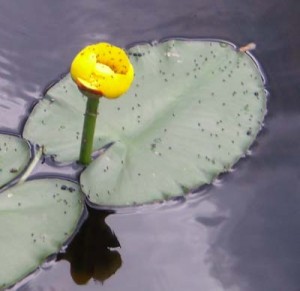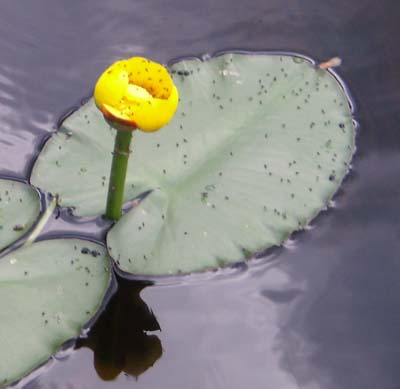Category Archives: Uncategorized
Wolves, both wild and domestic turned wild, are roaming in New York
NEW YORK STATE MUSEUM STUDY SUGGESTS WOLVES MIGRATING EAST
Albany, New York — 10/17/11
Museum curators Dr. Roland Kays and Dr. Robert Feranec used a new isotope test for the first time to determine whether eight wolves found in the Northeast over the last 27 years had been living in the wild or had escaped from captivity. This is an important question for species, such as wolves, that are not known to breed in New York state, but are occasionally discovered here. Results revealed that three of the eight wolves tested were probably natural immigrants because they had a history of eating wild foods. One of these wild wolves was found in Saratoga County in 2001 and the other two came from Vermont in 1998 and 2006. The isotope signatures of five others suggested they had been eating food in captivity, and were therefore probably escaped pets or zoo animals. Kays and Feranec documented their work in a new article published in the Northeastern Naturalist, a peer-reviewed and edited online journal with a regional focus on northeastern North America. The abstract is available at http://www.eaglehill.us/NENAonline/articles/NENA-18-3/10-Kays.shtml.
Wolves have been extinct in the Northeastern U.S. since the late 1800s but survive to the north in Ontario and Quebec, and have recently been expanding in the Great Lakes. Although this research shows that there have been at least three naturally immigrating wolves in the Northeast, there is no evidence at this point to suggest that there is an established breeding population. Rather, it is likely that these few wolves migrated to the Northeast from the Great Lakes area or from Canada, looking for potential mates.
Citing other studies, Kays and Feranec note that the recent recovery of wolves throughout much of the Great Lakes region and increased protection of wolves in Ontario make it likely that even more wolves will migrate into the Northeastern U.S. in the near future. “There is substantial suitable habitat in Northern New York and New England that could support a viable population of wolves” says Kays.
If wolves were to become established, this new top predator would probably reduce coyote populations in the Northeast and change the behavior and densities of other prey, such as deer.
Feranec says that the new isotope test that they used “is based on the principle that you are what you eat” and involves measuring the carbon isotopes of hair and bone fragments of the wolves. Animals that eat corn-based pet food or grain-fed livestock accumulate a different carbon isotope in their bodies than those who find their own food in the wild. The isotopes in the hair represent the animals’ diet since its last molt, while those in the bone represent a lifetime average of the animals’ diet.
Kays and Feranec also used this new isotope test to show that a cougar found in Connecticut this past June had spent its life eating typical wild prey, and was not a captive animal that had escaped or been released. The test was requested by the Wildlife Division of the Connecticut Department of Energy and Environmental Protection (DEEP), and confirmed genetic and other evidence showing that this was a wild cougar from South Dakota that migrated through the Great Lakes and New York State, before being hit by a car in Connecticut.
The New York State Museum is a program of the New York State Education Department’s Office of Cultural Education. Located on Madison Avenue in Albany, it is open Monday through Saturday from 9:30 a.m. to 5 p.m. It is closed on Thanksgiving, Christmas and New Year’s Day. Further information about programs and events can be obtained by calling (518) 474-5877 or visiting the museum website at www.nysm.nysed.gov.
Yellow Water Lily – Nymphaeaceae
Common Names: Brandy-bottle, bullhead lily, spatterdock, yellow cowlily
My son built a small pond in the backyard several years ago. Along with the necessary koi we bought the flora we added included a plant native to the entire USA – a yellow pond lily. In researching this plant I found out its history and the many ways this wild food is used and useful.
Description: As its name implies, the yellow pond lily is an aquatic plant. It is a long lived plant, a perennial, which grows from spongy rhizomes anchored into the bottom of a body of water. The floating leaves are thick, somewhat heart-shaped and have up to an 18” spread. The stalks connecting leaves and flowers to rhizomes can grow six feet long.
Flowers emerge on separate stem stalks. They are cup-shaped, yellow-green, with small scale-like petals. Flowers bloom from May to October. Spent flowers give way to seed heads that burst upon ripening, broadcasting their seeds over the water surface.
Habitat: Yellow pond-lily occurs in slow-moving streams, ponds, and lakes. The plant pictured here was in Pine Lake, NY, a shallow Adirondack lake. The plant grows in wet, poor sandy soils and grows best in 1’ to 5’ of water in full sun to part shade. It is however tolerant of shade and deep water. There is a boggy area fed by the Normans Kill in Albany, NY that gets choked up with these wild plants by mid-summer every year. This is where the lilies I have come from.
Location: The yellow pond lily can basically be found from Alaska south to California East to Labrador and south to Florida.
Edible: The roots (rhizomes) are rich in starch and can be harvested any time of the year and either roasted or boiled. I understand that the root can be dried and ground into a flour substitute. The seeds can also be gathered in late summer into the fall and roasted and shelled. They can be eaten as is, boiled like you would rice or ground into a flour/meal.
 Notes of Interest: Yellow Pond Lilies provides great cover for wildlife, including all types of fish, insects (aquatic, terrestrial and flying), amphibians and reptiles. It is also a food source for beaver, muskrats and waterfowl.
Notes of Interest: Yellow Pond Lilies provides great cover for wildlife, including all types of fish, insects (aquatic, terrestrial and flying), amphibians and reptiles. It is also a food source for beaver, muskrats and waterfowl.
The plant’s use dates back to pre-colonial times. Native Americans used the starchy rootstocks as a boiled or roasted vegetable. Additionally, they harvested the seed for grinding into flour.
Although seeds are produced and deposited on the water surface, the yellow pond-lily reproduces more readily by spreading rhizomes – I can attest to this. The lily in the koi pond has a root system around 4’ long with several spots that stems and flowers grow from. This native aquatic plant can readily take over a body of water – please do not help it spread. It is very difficult to eradicate

